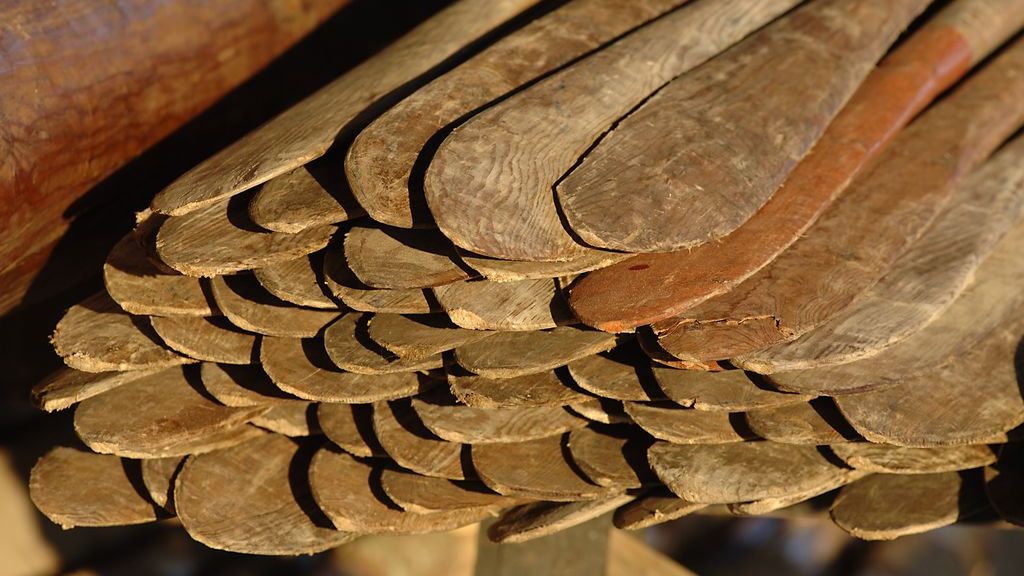Without rope - no Viking ships!
The Viking ships are equipped with kilometers of ropes – The Sea Stallion alone has more than 2 kilometers of ropes - and without solid ropes it would not be possible to set the big sail and go out to sea.
Many specialized craftsmen were needed to make a ship ready for sailing, and the rope maker performed a very important piece of craft.
There are not many left who know the old craft and therefore it is important to keep this particular craft tradition alive.
The ship's ropes
Written sources and archaeological finds show that ropes in the Viking Age and the Middle Ages were often made of lime bast, while the more well-known hemp rope came into use later.
The Vikings also used skin ropes made from seals, walruses, deer, elk, ox or pig, and ropes made from hair from horses, cowtails or the particularly long cover hairs from the ancient sheep breeds. Walrus skin, however, were only used for the ropes that were supposed to be strongest.
It is difficult to determine what kind of rope the different types of ships have had in the Viking Age. But, by testing ropes of different materials on the museum's ship reconstructions, we gain new, crucial knowledge about the strength and applicability of the various materials.
When can you meet the rope maker?
The rope maker produce ropes from various natural materials, e.g. lime bast, wool and horsehair for the museum's boats, and will be working at the museum some of the days during the summer.
Facts about 'Rope maker days'
When:
The rope maker works at the museum the following days:
19th – 21st of July and 9th – 13th of August at 10.00 to 17.00.
Where: Vikingeskibsmuseet, Vindeboder 12, DK-4000 Roskilde
Admission: Family ticket (2 adults + children under 18 years): 280 DKK
Children under 18 years of age are free.
Adults 150 DKK
» Read more about the craftspersons who show their crafts at the museum during the summer.






